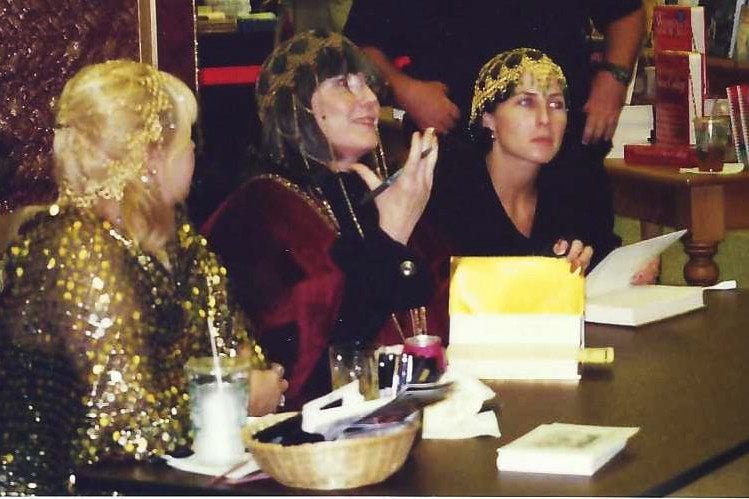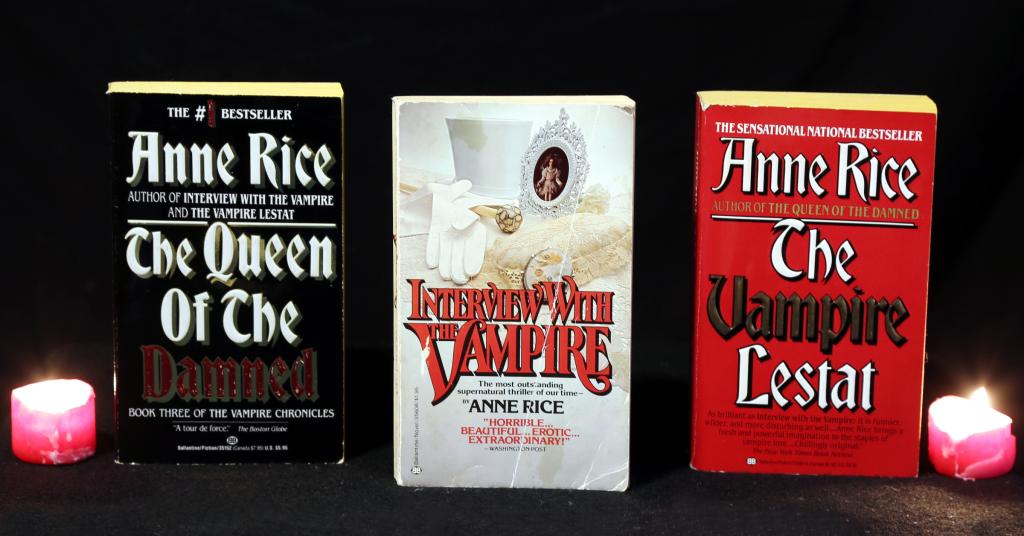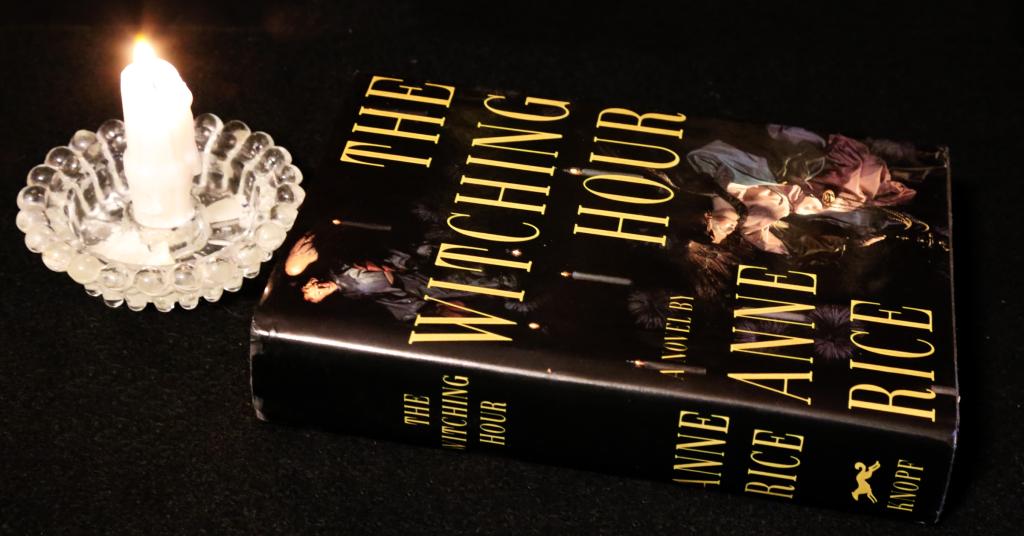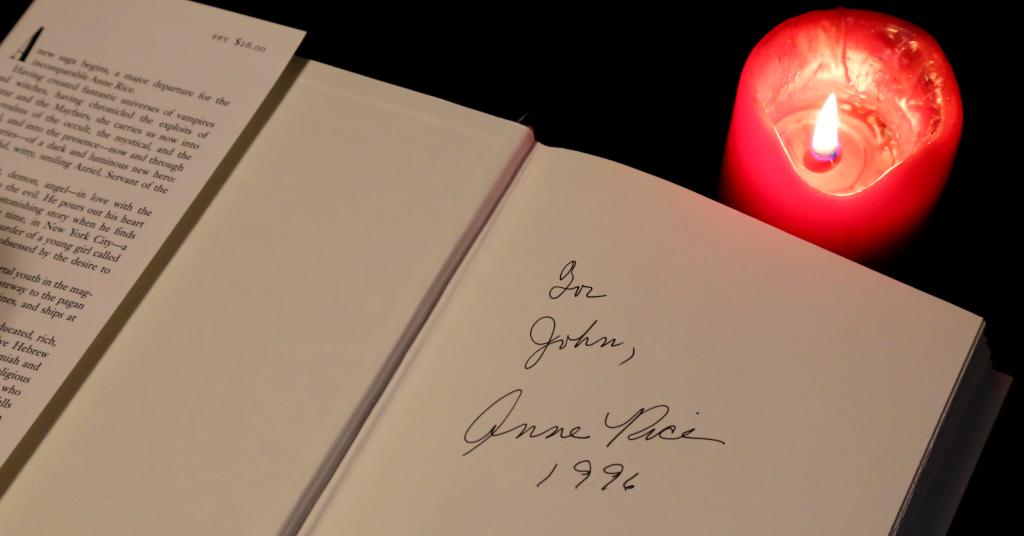Novelist Anne Rice died Saturday, December 11, from complications related to a stroke. She was 80.
She wrote over 30 books about vampires, witches, mummies… and Jesus. She was born in New Orleans, lived in Texas and in California, then moved back to New Orleans, which was both her home and the setting for many of her books. Death was a major influence on her life and in her work. Her mother died from alcoholism when she was 15, her first child died from leukemia at age 5, and her husband died from cancer in 2002.
And that’s all the biography I’m doing to do. Instead, I want to tell my own story about Anne Rice, her work, and the impact it had on my life.
Interview With the Vampire
School always started the Tuesday after Labor Day. One day the week before was Registration Day. You showed up, got your class schedule, found all the classrooms, and met your teachers. I can’t remember if we were assigned textbooks then or on the actual first day of school. What I do remember is that it was a slow, boring day. So I did what any geek would do – I took a book.
On Registration Day for 10th grade I took Interview With the Vampire.
I’ve been fascinated by vampires and vampire stories ever since I watched the original Dark Shadows as a very small child. I was always looking for new vampire books, but I wanted a certain kind of vampire book: I wanted rich and classy anti-heroes, not monsters (Stephen King’s Salem’s Lot is great for a scare but not the kind of vampires I wanted to read about).
I don’t remember why I picked Interview With the Vampire, though I suspect the cover had a lot to do with it. I have the first edition of the paperback (which isn’t worth anything special) – both the front and back covers are beautiful. A quote from the Washington Post called it “Horrible… Beautiful… Erotic… Extraordinary!” I was a 15 year old boy – “erotic” may have sold it.
I would quickly find out that “erotic” didn’t mean what I hoped it would mean, but by that time I didn’t care. I was enthralled with the story of Louis, Lestat, and Claudia. Louis was the vampire with a conscience – I saw myself in him. Lestat was the villain of the book, but there was more to him than that… something both readers and author would eventually discover. And Claudia, condemned to an eternity as a child… now that was a horror. I saw her death both as unjust and as mercy.
I was too young and too literal minded to pick up the subtext of the novel. When I found out that Rice’s daughter died at age 5 I realized there was more to the story, and I started looking for it. I looked for it in other stories too.
The Vampire Lestat
Rice wrote The Vampire Lestat in 1985 – it was the second in what would become known as The Vampire Chronicles. My copy is from the seventh printing of the paperback in 1989, which means I read it after high school, after college, after I got married, and after I had my second professional job and first promotion. In other words, after I had accomplished all the things I wanted to accomplish – all the things that were supposed to bring me satisfaction and joy in life.
So why was I miserable?
The short answer is that I was chasing the things I had been told I was supposed to want and not what I really wanted. I discussed this in 2018 in a post I titled Living With Thoughts of Suicide – A Personal Story.
I began self-medicating with vampire books and movies. There are far worse things to do – it’s cheaper and less dangerous than drugs or alcohol, although it does have some unusual side effects.
I read several recent (at the time) vampire series. I re-read Stoker’s Dracula. And I re-read Interview. I read it differently as a young adult than I had as a teenager. The cool story was still there, but there were also deep questions – the kind of questions I was thinking about on a non-stop basis. And then I found The Vampire Lestat.
It was amazing. Lestat was no longer the cruel villain – he was the dark anti-hero I was looking for. He was, in words Rice gave to another vampire (Armand) “powerful, beautiful, and without regret.”
Thirty years and multiple books later, I still think The Vampire Lestat was Rice’s best book. More vampires, more backstory, and more action. I was never going to be powerful, beautiful, and without regret, but I could enjoy Lestat being all that, and more.
The Queen of the Damned
As I recall, I read The Vampire Lestat and The Queen of the Damned back-to-back. But for all that I loved Lestat, I was disappointed in Queen.
The plot (which was never fast-paced) got even more convoluted. The backstory went from imaginative to fantastical. Most importantly, Lestat changed from being a powerful vampire to a comic book superhero. Was there anything he couldn’t do?
My paperback copy from 1989 is in near-perfect condition – I’m pretty sure I only read it once.
The Mayfair Witches
Still, my memory of how Anne Rice could write was strong. When The Witching Hour came out in 1990 I was still three years away from discovering Wicca, but I’ve always had a fascination with witches and witchcraft. So I bought it in hardback rather than wait for the paperback.
I loved it. The witchcraft seemed odd, but it worked. And Rice told a very good story.
I remember exactly where I was when I finished it. I was working full time and going to graduate school at night – reading time was in short supply. So I took it to work with me and read in my car at lunch.
My copy of The Witching Hour runs 965 pages. Now, I like big books. But big books bring big expectations. I started getting nervous around page 800 – it didn’t seem to be moving toward a conclusion. By page 900 I was getting worried.
I was in the parking lot at work. I finished the last page and discovered that my fears had come true. The Witching Hour didn’t have an ending. It just stopped. 965 pages and I would have to wait three years to learn what happened next. There are cliff-hangers, and then there is weak storytelling.
I read Lasher (1993) and Taltos (1994) and grew more and more disappointed. As with the progression from Interview to Lestat to Queen, each book got more fantastical and less enjoyable.
Memnoch the Devil
Anne Rice went back to The Vampire Chronicles in 1992 with The Tale of the Body Thief and again in 1995 with Memnoch the Devil. I was excited, and optimistic, and more than a little nervous. I was even more nervous when I read the blurb on the inside cover of Memnoch.
The Vampire Lestat is at last offered the chance to be redeemed … He is taken like the ancient prophets into the heavenly realm and is ushered into Purgatory. He must decide if he can believe in the Devil or in God. And finally, he must decide which, if either, he will serve.
I bought it anyway, and read it.
I remember nothing about it except that I was horribly disappointed.
I wondered what had happened to the author who told such great stories. So did a lot of other people. I came across one critic who said “what Anne Rice needs most is an editor – someone who can tell her ‘no’.”
I remembered that when I was working on The Path of Paganism. When my editor sent back multiple pages of things she thought needed to be changed, I reminded myself that the purpose of an editor is to make the book better. If Anne Rice needed a good editor, I certainly did.
Memnoch the Devil was the last Anne Rice book I read. Perhaps one day I’ll try some of the later Vampire Chronicles stories, but I doubt it.
Meeting Anne Rice
I met Anne Rice at a book signing in 1996, at a Barnes & Noble in South Bend, Indiana. She was on a book tour in support of Servant of the Bones. I was in the middle of my job from hell and whatever I may have felt about her current writing, there was no way I was going to turn down a chance to meet Anne Rice.
I say I “met” her. I got there early, bought my copy of Servant of the Bones, stood in line for at least an hour, and took a couple pictures as I got close. I handed her my book and told her how much I enjoyed her work. She said something along the lines of “thanks so much” as she signed the book, then handed it back to me. And that was that.
That’s what you get at book signings for popular authors. Anne probably signed books for three hours straight – there was no time to have a conversation with anyone. But I felt the need to see her face-to-face and to speak with her, if only a few superficial words.
I still have Servant of the Bones, but I never read it.
Giving thanks for an impactful life
When I heard that Anne Rice had died, everything you’ve read here went through my mind in a matter of seconds. But in the end, I want to give thanks for a book that kept a high school kid fascinated through some boring times. I want to give thanks for a book that gave a depressed 20-something a few hours of pleasure. Mainly, I want to give thanks for the author who wrote those books.
Anne Rice made an impact on my life. Her books helped me out when I badly needed it. And for that I will always be thankful.



















